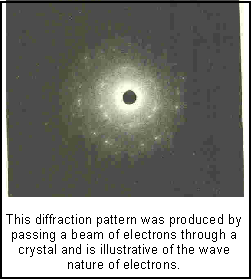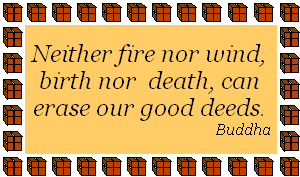|
Decisions--who or what makes them?
Beyond all this there is the problem of decision making. Who, what, and where are the decisions made on the actions to be taken. And who or what keeps the records? After an electron wave is collapsed by an observer to become a particle in order to make a measurement, an electron particle will, of its own accord, spread out quite rapidly but only as a probability wave.
Given sufficient time it could spread throughout the whole universe--only to be ordered to collapse instantaneously to a particle state again because some inquisitive human being wants to make a measurement. Who has the record of its probability distribution so that the collapse can be carried out instantaneously in an orderly manner?
In the Aspect experiment, it was the measurement of the polarization of one of two correlated photons that collapsed its wave function--and instantaneously and automatically brought about the polarization alignment on the same axis of its correlated partner. Yet no signal at light speed or less could pass between them.
It was the conscious decision of the experimentalists that both started the chain and triggered the second collapse. A consciousness that can trigger both collapses, the second collapse somehow getting its instructions from beyond space and time, must surely itself be non-local or transcendent, or at least be contiguous with a consciousness that is so capable.
Quantum physics has demolished materialism as a valid concept. So what alternatives are there that are consistent with presently known 'facts.' One possibility is some form of monistic idealism such as the well-known platonic version of people who sit in a dark cave watching the shadows on its back wall. According to Plato that is the reality, for what we experience in this world is but the reflections of the reality of the perfect world that lies beyond our vision.
Is our science compatible with an appropriate form of idealism (based on ideas), and if so, can we interpret both science and philosophy on some mutually compatible formulation?
At least superficially, there is a resemblance between the answers to key questions given by quantum physics and those given by Zen masters:
"What is Buddha?" asked a student monk. "The mind is Buddha," answered the master. "Then what is mind?" asked another student. "The mind is not Buddha," responded the master.
Imagine a student asking the ghost of physicist Neils Bohr if an electron is a particle. "It is," is his likely reply. Another student asks him, "Is an electron a wave?" Again Bohr responds, "It is." "Where can we find such a wave?" asks another. "Beyond time and space," says Bohr. "And where is that?" is the next question--to which Bohr enigmatically answers, "Where the wave is."
When we fire electrons, one at a time through parallel slits, at first single hits register on our screen--which is consistent with the electron as a particle. But if we fire thousands of single electrons, one at a time, through the same slits, we get an interference pattern--which is consistent with the electron as a wave. This wave aspect persists, even for a single electron--a wavicle? Where is this wave aspect before the thousands of other single electrons were fired, before the interference pattern commenced to register? It never manifests in ordinary space, so where was it hiding and how does it manifest as diffraction only after the event?
|
|





